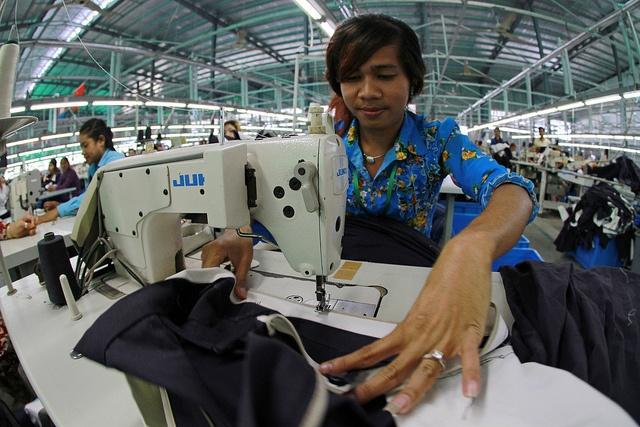Recycling Solar Panels Could Represent a $15 Billion Opportunity By 2050


Editor's Note: This post originally appeared on The Climate Change Guy blog.
By Dr Anthony Horton
The deployment of solar photovoltaic (PV) panels has grown at unprecedented rates around the world since the early 2000s, according to the End of Life Management-Solar Photovoltaic Panels report published in late June by the International Renewable Energy Agency (IRENA) and the International Energy Agency (IEA). This report presents the first global projections for future solar PV panel waste volumes to 2050, and the findings are unequivocal: Recycling solar photovoltaic panels is expected to represent a $US15 billion opportunity worldwide by 2050.
Two scenarios are compared in the IRENA/IEA report: regular loss and early loss. Regular loss assumes a 30-year lifespan for solar PV panels, and early loss takes ‘infant’ or ‘mid- life’ failures prior to the end of the 30-year lifespan. Increasing volumes of solar PV panel waste represents an environmental challenge and significant opportunities to create value. Opportunities include the recycling of raw materials and the creation of new end-of-life industries for solar PV panels. According to the IRENA/IEA report, recycling of solar PV panels will be an essential part of the transition to a sustainable economically viable and renewables-based future.
As of the end of December last year, global solar PV panel capacity reached 222 gigawatts and is expected to grow to 4,500 gigawatts by 2050. As the demand for solar PV panels grows, it stands to reason that the volume of decommissioned solar PV panels will also increase. By the end of this year, up to 250 000 metric tons of PV waste is expected to be generated, representing 0.60 percent of the total mass of PV panels installed globally -- which stands at 4 million metric tons. By the 2050s, 5.5 million to 6 million metric tons of solar PV waste is expected each year.
Policy action is needed to address the global challenges associated with increasing volumes of solar PV panel waste going forward. Frameworks that enable efficient waste management tailored to the needs of each country or state are essential. China, Germany and Japan are expected to be the top three countries for solar PV panel waste by 2030. By 2050 China is still expected to have the highest amount of waste. The United States will overtake Germany in the second spot with Japan expected to remain in third place.
Only the European Union (EU) has regulations for solar PV panel waste. The EU has pioneered electronic waste (e-waste) regulations that cover solar PV panel collection, recovery and recycling targets. The EU Waste Electrical and Electronic Equipment (WEEE) Directive requires all solar PV panel suppliers finance the end of life collection and recycling costs. In contrast, many countries classify solar PV panels as either general or industrial waste. In Japan and the United States, general waste regulations may include testing the solar PV panels for hazardous material content and prescribing and prohibiting specific shipment, treatment, recycling and disposal methods.
The IRENA/IEA report estimates that up to US$450 million worth of raw materials could be feasibly recovered from solar PV panels by 2030 -- the amount currently required to produce approximately 60 million new solar PV panels capable of generating 18 gigawatts of power. By 2050 the value of recoverable materials from solar PV panels could be as much as US$15 billion -- or the amount required to produce 2 billion solar PV panels capable of generating 630 gigawatts of power.
Managing the end-of-life of solar PV panels also offers opportunities that are related to the three tenets of sustainable waste management.
1. Reduce: Given current research and development trends, the raw material inputs for solar PV panels could be significantly reduced by 2030. This would also reduce the amount of hazardous materials used in the production process
2. Reuse: Rapid growth in solar PV panels is expected to create a robust secondary market for panel components and materials. This secondary market presents opportunities for buyers in countries with limited financial resources
3. Recycle: In the longer term, dedicated solar PV panel recycling plants can maximise the recovery of materials from solar PV panels. Technical and regulatory panels need to be established to guarantee that PV panel waste streams can be profitable
Industry, governments and other stakeholders need to prepare themselves for the significant amount of solar PV panel waste in the following ways:
1. Adopt PV-specific waste regulations: The development of PV specific collection and recycling regulations will be crucial to consistently, efficiently and profitably managing increasing solar PV panel waste volumes. Such regulations will also promote more sustainable lifecycle practices and improve resource efficiency
2. Expand waste management infrastructure: Management infrastructure for solar PV panel waste needs to be adapted to the unique conditions in each country or state. Rapidly growing solar PV panel markets such as Japan, China and India currently lack specific PV panel waste regulations however they have established long term policy goals
3. Promote ongoing innovation: Unlocking the maximum end-of-life value of solar PV panels requires targeted research and development efforts,plus economic and environmental analyses that maximize society-wide benefits while minimizing adverse economic and environmental outcomes
Given the rapid growth of solar PV panels as part of the fight against global climate change, the publication of the IRENA/IEA report is timely. As with any solution which governments, industry and individuals choose to implement, it is important that solar panels must not create persistent environmental impacts at any stage of the lifecycle. Governments around the world can learn from the EU and enact legislation that provides clarity with respect to solar PV collection, recovery and recycling targets. This ensures that any solar panel waste products are managed efficiently.
Once this legislation is enacted, the solar panel industry can continue to grow and innovate without placing its financial longevity at risk. Wider industry can purchase and install solar PV panels as part of decarbonizing their operations, with a lower likelihood of significant disposal or recycling costs which can impact their long term economic viability. Similarly, individuals can decide to purchase solar PV panels for their homes with confidence in the knowledge that the risk of disposal or recycling costs negatively impacting their household budget is reduced.
If governments, industry and individuals each play their respective part, the potential payoff is significant given recycling solar photovoltaic panels is expected to represent a $US15 billion opportunity worldwide by 2050.
Based in Perth Western Australia, Dr Anthony Horton is an international authority on environmental protection and climate change specialist. A highly sought-after consultant whose work is published in scientific journals and presented at global conferences, Anthony regularly travels throughout Australasia as an environmental advisor to international Government bodies and private corporations.
Fashion Brand Strategist Crafts a Chic, Socially Responsible E-Commerce Site


By Kathleen N. Webber
Social entrepreneur Jason Keehn, CEO of Accompany, worked in fashion brand strategy for most of his life. Mid-career he felt he was missing a sense of purpose. He went back to graduate school to study global ethics but knew policy work and academia weren’t for him. How could he combine ethics and fashion in an entrepreneurial venture?
“I asked myself: Why wasn’t I currently an ethical fashion shopper? I shopped ethically for food,” he says. In 2013, he set out to create a socially responsible brand that he calls a Barney’s-meets-Whole Foods e-commerce site selling curated high-end apparel, accessories and home goods from around the world.
On Accompany, you can buy everything from a baby alpaca fringed poncho dress made in Peru or a windowpane woven dress from India, to a black horn inlay bracelet from Kenya, a beaded clutch from Guatemala, or a leather backpack from Ethiopia. The products are artisan made, fair trade and also serve a philanthropic or humanitarian need.
The traditional craft techniques used in making the products on the site are reflective of the cultural heritage of a community. “People are looking for brands that are sustainable and related to human values. We have 125 brands impacting 43 countries that are stylish and do the most good, “ Keehn explains. "The idea of supporting people and communities inspired the name Accompany.”
The Accompany design team comb the world looking for items for their shoppers who are fashion forward, words not normally reserved for eco/fair-trade. Some are contemporary fashion labels like Lemlem, an Ethiopian line of handwoven clothing found in high-end retailers like at Barney’s. “At Lemlem, for example, we are simply picking from their line of sheets, knowing they produce ethically and fit our conscious sourcing model,” Keehn explains. With other brands, his team works closely on creating exclusive designs for Accompany that are often a design shift or color change of an existing style. “With other partners, we are creating products from scratch for the site.”
Everything Keehn and his team does comes back to human impact. Merchandise they choose on the site supports artisans with indigenous craft, often in remote regions without market access; or fair trade workshops focused on paying above-average wages, good working conditions, training in underprivileged areas and capacity building. Keehn believes consumers are looking for a "return to humanity" in their shopping choices.
“In our modern techy world, with so much digital impersonal communication, and faced with large, opaque corporations steering our lives -- people are, in response, really appreciating things made by humans for humans -- the maker, the artisan, cultural authenticity, handcrafted items that are special and not mass produced, but rather made with intention and with a unique personal touch."
In three years, Accompany tripled the number of brands it works with. When creating original items with artisans, it’s an interesting balance to make sure the company respects the craft and traditions of the “maker” community, while at the same time giving the products a modern twist to make them marketable. “I think it’s in the intersection of modern trend and the timeless tradition of the crafts and ethnic influence -- the tension between the two -- where the products become truly compelling,” Keehn says.
“It’s a respectful collaboration and co-creation,” he continues. “Many of the artisans appreciate the outside push to try new things, get them out of their comfort zone a bit more, shake things up artistically. And at the same time, we don’t want to simply be commercializing their heritage of craftwork or appropriate their culture. It’s a balance – respect and representation should always lead the exercise.”
While initial research shows visitors to the site are mostly from the New York metropolitan area, the company's scope is expanding as consumers learn more about ethics and sustainability in fashion and hear about Accompany through social media and press.
“Consumers are now becoming educated, and therefore guilty, about making the wrong choices,” he says. “And at the same time, they love the positive stories of making a difference, knowing that something on your body was made intentionally by a person with local skills in an overlooked corner of the world, who is appreciative of the fair work and environment. It feels nice to know that as you wear your clothes, and tell that story when you’re asked about it.”
For the same reason, gifting is a huge area for Accompany. "It’s so great to give a special, unique item that has a positive impact," Keehn says. "We are all aware that we have too much 'stuff' and overly commercial, mass-produced items don’t have the same meaning that they used to, compared to something made by hand, influenced by a remote local culture, and authentically different than everything else you see.”
Images courtesy of Accompany
Kathleen N. Webber is a veteran journalist and academic who teaches Magazine Writing, Writing for Interactive Multimedia, Multimedia Storytelling for the Web, and Press History at The College of New Jersey. Outside of the classroom, she has written about design as a staff editor and freelance contributor to national, regional and trade publications. For the past three years, she has researched how fashion brands can be more ethical and sustainable in their supply chains in order to clean up the global industry. She also explored the re-shoring of garment manufacturing in the U.S.
Why APP Is Investing in Landscape Restoration


The world’s forests are under threat. This places the entire planet at risk as they work as the globe’s lungs.
Developed nations in the North have been effective at restoring forests, but much of this destruction continues throughout developing countries in tropical regions. While small landholders clear their fair share of forests, many companies producing some of the world’s most coveted raw materials -- including pulp, palm oil and rubber -- also contribute to this problem. Hence business-friendly publications such as The Economist have called on the private sector to find solutions for this ongoing challenge.
And while the evidence suggests that more governments across the world have their heads wrapped around this problem, more needs to be done. The Bonn Challenge, which aims to restore and conserve 150 million hectares of forests by the end of this decade, is a step in the right direction. But environmental groups such as Greenpeace have described the threat to forests as a crisis and called for companies to take aggressive actions to stop the destruction of forests and other ecosystems, including peatlands.
One company that says it is rising to this challenge is Asia Pulp and Paper (APP). Long the target of environmental groups, in recent years the company has earned at a minimum begrudging respect from the likes of Greenpeace for its zero-deforestation efforts and landscape-restoration work in its home base of Indonesia. Last December at the COP21 talks in Paris, the company committed to finance the restoration and protection of one million hectares of Indonesian forests. The company says that it is the first and only private-sector company to have such a pledge accepted by the Bonn Challenge so far. That move is another step in APP's forest conservation policy, which the company launched in 2013 as part of its plan to stamp out all forest clearance across its entire supply chain.
To learn more about the company’s work on landscape restoration and why the company is making these investments, TriplePundit spoke with Aida Greenbury, APP’s managing director of sustainability, during the IUCN Congress last week in Honolulu.
Greenbury framed APP’s shifting policy as a business imperative. “We had to move to a new business model,” she said, “and it had to be implemented down to the supply chain level.”
As part of what APP says is its work to transform its supply chain, the company claims it has invested over $200 million in such efforts since it changed its sourcing policies in 2013. These funds paid for a bevy of programs. One of them ensures that locals living in and around APP’s land concessions have due process under the principles of free, prior and informed consent (FPIC). Other initiatives concentrate on stopping the fires that have shattered the reputations of companies within the pulp, palm oil and rubber industries. In addition, APP will spend another $50 million on what it describes as “de-risking” its forest investments and $10 million on the 1 million-hectare forest preservation commitment.
From APP’s perspective, these promises will not work if the company cannot back them up with sound programs. So included in these de-risking investments are programs that work with local governments to ensure FPIC principles are followed. The company is also consulting with a wide range of scientists, including agronomists, to ensure projects such as those focused on agroforestry can succeed.
Agroforestry is one tactic APP is counting on in order to see its forest preservation policies succeed. The idea is that locals who live within APP’s land concessions will grow profitable crops on dedicated land so that they are not tempted to clear cut forests in their quest to find economic security. But this is more than providing families tree seedlings and the sharing of best practices in farming. A community that finds success in growing crops such as mangoes or coffee will not be satisfied long if they cannot find markets for their products.
To that end, APP says it is working with a coffee customer in Europe to find ways to purchase and brand coffee grown on some its land concessions; the same is being done with a Japanese company interested in purchasing fruit grown on other lands. Agroforestry, like conventional agriculture, is not an exact science: successes in Brazil may not work in Indonesia, and ideas that can take root in Sumatra may flounder in Kalimantan.
“At the end of the day, I have to explain what these millions of dollars in investments mean to our company’s shareholders,” Greenbury told us. “I have to make the business case for landscape restoration, so it has to work.”
There are many pieces to this puzzle: The company needs a secure amount of pulp to keep its operations running smoothly, local communities need to be incentivized so they don’t cut down trees, and forests need to expand so the company can keep the trust of its stakeholders. If APP can succeed on these efforts and score buy-in from environmental groups, this company could become a leading case study of how economic growth can align with sustainable development.
Image credit: Rainforest Action Network/Flickr
The Clean Tech Electricity Future


Pacific Gas and Electric is one of our nation’s largest electric utilities. It recently proposed retiring its nuclear power plant that began commercial operations in 1985. PG&E’s says the plant “no longer fits the needed generation profile of the changing energy landscape.”
What is this new energy landscape? It is clean tech. The PG&E plan defines the technologies changing the energy landscape as a combination of renewable energy, energy efficiency, battery storage and grid changes.
How clean tech will redefine buildings and the grid
Zero net energy (ZNE) buildings embody the 21st-century clean tech future. ZNE buildings use a combination of solar, batteries, LED lighting systems, artificial intelligence (AI) and the Internet of Things (IoT) to lower monthly electric bills, reduce emissions and increase service reliability.Clean tech is also reshaping the electricity grid. The 20th-century grid is based on power flowing to customers. Payments flow from customers to utilities. Emissions are not metered and their climate changing costs are not collected. Utilities principally rely on fossil fueled power plants, rather than storage, to insure supplies. Customer reliability is measured by seconds, minutes and even days of service interruptions.
The 21st-century grid has the potential to be a lower-cost, lower-emissions and higher-reliability solution. It will be anchored by battery storage owned by both utilities and customers. Service reliability will be measured in nanoseconds. AI and IoT can make the grid a smart marketplace where ZNE buildings (and emissions) arbitrage between buying utility electricity, self-generation, deployment of building energy efficiency and purchases from third parties including solar farms or other ZNE building.
Four drivers propelling clean tech’s commercial growth
There are four clean tech mega trends propelling utilities and customers toward this smart grid as a market place business model. They are:
- Manufacturing economies of scale. Clean tech prices are falling due to manufacturing economies of scale. This is a global phenomenon. Solar and batteries will continue to achieve lower prices as China, Japan, Europe and California increasingly shift toward these technologies. Clean tech technologies like AI and IoT will gain global manufacturing economies of scale from other industries like automobiles and robotics.
- Innovation. Clean tech is gaining cost reductions through innovation. Again this is a global phenomenon. Clean tech costs will continue to fall from global competition for innovation in AI, IoT, batteries and renewable energy.
- Clean tech is easier to build. Clean tech electricity solutions do not require billions of dollars and a decade of plant construction like nuclear power plants or “21st century” coal power plants. For example, a roof top solar system can be installed in two days. Add a week or two if it is installed with a smart IoT load control system, a battery system and LED lighting.
- Clean tech is customer centric. The current utility business model is based on mass production. Clean tech’s business model is based on mass customization. It enables a building’s least cost goals through a customized mix of LED lighting, AI, IoT, batteries and solar. A clean tech grid will also enable ZNE building to customize, in real time, the building’s operations to optimize for occupant experience, cost and environmental benefits.
The transition to clean electricity
It looks to be a bumpy road toward a clean tech electricity future. PG&E plans to retire base-load power because it no longer fits into a changing energy landscape. And that's a major precedent. But this step forward is matched with many more steps backward as utilities pursue use of demand charges to blunt customer purchases of solar.
Additionally, too many utilities continue to invest in fossil fueled power plants that add to their rate base (and profits) even as the life of plant economics for these based loaded power plants are being challenged by clean tech’s continued path along a declining cost curve.
The upcoming election may deliver another step toward a clean tech electricity future. To date, millennials have yet to show up in significant numbers to vote. This is the generation most aligned with clean tech as part of their technology vision that includes autonomous cars, smart devices and a sustainable food supply. What if 50 million millennials did vote in this upcoming election and they voted for candidates that aligned with their expectations? Will history record their vote as the critical step that enabled a clean tech electricity future?
Image credit: Pexels
How a Social Investment Fund Strives to Preserve Brazil’s Forests


Brazil’s forests have long been the foundation of the country’s culture, dating back to indigenous cultures long before the Portuguese arrived. The rich variety in woods is in part why Brazilian design has earned affection across the world, from Oscar Neimeyer’s modernist buildings and interiors in Brasília to furniture designers such as Jean Gillon, Sergio Rodrigues and Joaquim Tenreiro. But the demand for Brazilian woods such as cumaru, ipe, jatoba, mahogany and rosewood contributed to the decimation of forests. And the oft-unchecked development in regions such as the Amazon and cerrado have exacerbated Brazil’s deforestation problem.
“We’ve been renowned for our hardwoods for over 100 years,” said Bruno Mariani before an audience at the IUCN Congress in Honolulu earlier this week, “but now our forests are facing problems such as the failure to prevent fires and stopping cattle from eating forest regrowth.”
To that end, Mariani launched Symbiosis Investments in 2008. Part social enterprise, part agribusiness, and part reforestation venture, Mariani and his colleagues offer a market-based approach that could thrive as a model across the world. Symbiosis runs a fully integrated operation that restores forests while providing a reliable and profitable supply of timber.
The company controls the entire cycle of wood production, starting with seed selection and storage, continuing with the management of its native species trees in the Trancoso region of Brazil, and finally its harvested products. The company’s managed forest, located halfway between Rio de Janeiro and Salvador da Bahia, is in the middle of the country’s Atlantic rain forest region. Home to over 3,000 plant species, dozens of birds and 35 mammals, over 90 percent of the region’s original forests have been lost due to rapid logging and unchecked development.
Mariani and his business partners saw an opportunity to heal the local environment while producing a material that is still very much in demand. The company first started with a 1,500 acre (5.8 square miles) concession. Since then the company has expanded with an extensive seed generation and storage operation, nurseries and the cultivation of a variety of native trees that are in demand for their strength, aesthetics and resilience. During a IUCN panel, Mariani argued that his company’s success shows that growing trees on carefully managed lands makes more business sense than harvesting them from virgin forests.
Furthermore, when managed sustainably and responsibly, Mariana posited that wood as a building material has a far smaller carbon footprint than building products such as concrete and steel. And from an conservation perspective, this land can also serve as a viable carbon sink while offering job opportunities for locals. “We’ve proven that we can make a profit while respecting the land,” said Mariani, “and our model is a viable option for private landowners.”
Symbiosis currently manages about 100,000 hectares of forests, most of which was land damaged by cattle ranching. The company is currently seeking more investors so that it can scale up its plans across the 1,500 square mile Atlantic Forest, which extends into as far inland as the border areas Brazil shares with Argentina and Paraguay.
Image credit: Deyvid Setti/WikiCommons
Disclosure: Asia Pulp and Paper (APP) is funding Leon Kaye’s trip to Hawaii. Neither the author, nor Triple Pundit, were required to write about the experience.
Ben & Jerry's Keeps Fans Close By Speaking Truth To Power


Advertisers and marketers love to praise Ben & Jerry's for its expertise in using social media. The company spends about a fifth of its marketing budget to reach 10 million "fans" who connect to its accounts on Facebook , Twitter, Snapchat and other platforms. But technology is only the tool. Ben & Jerry's keeps its fans close by speaking truth to power.
Ben & Jerry's didn't do much advertising in its early years. Instead, the ice cream favorite relied on direct sampling, media coverage and word of mouth. Social media is an extension of this strategy, said Jay Curley, senior global marketing manager.
"Direct relationships with fans and standing up for the values we believe in is how the brand was built," he told TriplePundit. "When social media emerged, we were in a good position to take advantage."
The company distributed over 70 "values blog posts" on its site so far this year, a 20 or 30 percent increase from 2015. The posts advocate for solutions to difficult challenges like structural racism, climate change and voter suppression. They steer readers to activism resources in ways that are optimistic and funny without soft-pedaling the problem.
"We're a much more content-driven organization than we used to be," Curley said. "Storytelling is an important way for us to inspire fans and build the capacity for social change."
Taking forthright stands on social issues is "our voice as a business," Curley said of the company. "It's a way for us to reach fans in a way other businesses can't."
In April, co-founders Ben Cohen and Jerry Greenfield, board chair Jeff Furman, and other board members were arrested in a civil disobedience action at the U.S. Capitol in protest of voter suppression. "The media didn't want to tell the story," Curley said bluntly, "so we told it ourselves."
The action generated 500 million impressions through sharing on social media, and it lead readers to other posts like a one-minute video that explains voter suppression in a pantomime with ice cream and spoons. "With Snapchat, we were able to make a narrative about what was happening in [Washington, D.C.]," Curley explained. "Twitter is for what's happening now and what others are doing. We would share tweets from the National Association for the Advancement of Colored People (NAACP), and they would share ours. Then environmental organizations like Greenpeace USA and the Sierra Club picked it up. It happens organically."
CEO Jostein Solheim said digital platforms "let [Ben & Jerry's] put all the relevant information into the consumer's hand. It allows us to scale our social impact."
The result is advocacy journalism that is also marketing. Recent Ben & Jerry's posts include a testimonial from NAACP President Cornell Brooks, a post entitled "8 Weird Things You Didn't Know Were Caused By Climate Change," coverage of the next frontiers in the struggle for LGBTQ rights, and a somber report on the bleaching of the Great Barrier Reef. A particularly tough June post on systemic racism was re-posted and circulated through July, Curley told us. It was shared widely within the racial justice movement and also picked up by several journalists.
The posts barely mentioned ice cream. They didn't have to.
Image credit: Flickr/Robert Marschelewski
Yes, Peter Thiel Still Likes Donald Trump ... And Hates The D.C. Metro


Silicon Valley tycoon Peter Thiel has certainly carved out a unique space for himself in the 2016 election cycle. In the latest development, Thiel -- who co-founded PayPal and is a Facebook board member -- penned an op-ed in support of Republican presidential candidate Donald Trump, which appeared in the Washington Post last Tuesday.
After spilling much ink on a critique of the D.C. Metro, Thiel wrapped up the op-ed by stating that the first step toward improving our government would be to provide voters with the ability to tell transit workers, "You're fired."
If that doesn't make any sense to you, join the club. A growing number of media and political observers jumped all over the op-ed for not making any sense. However, it makes perfect sense on one important score.
Peter Thiel and Donald Trump
For those of you new to the topic, Peter Thiel presents a rather unusual figure in the 2016 election cycle. Part of his uniqueness stems from his role as the only A-list tech billionaire to publicly support Donald Trump for president.
Thiel actively pursued that singular role despite the virulently anti-LGBT planks in the Republican Party platform. (Thiel is an out gay man.)
For reasons unknown, Thiel kept his support for Trump strictly under wraps during the primary cycle. In May, his name appeared on rolls as a California delegate for Trump, but Thiel made no announcement or public comment on that status.
Many political observers were rightfully surprised, then, to see his name surface again as a featured speaker at the Republican National Convention. And that role was no small potatoes.
Thiel managed to wrangle himself one of the most important speaking slots of the entire convention. He appeared on the final night, just two speakers behind Donald Trump himself.
The only two people separating Thiel from the newly-dubbed presidential nominee were Trump's own daughter and campaign advisor Ivanka Trump, and "longtime friend" Tom Barrack, the billionaire investor who developed a business model that involves rehabbing entertainment properties -- and entertainers, too.
Voting is good for me, not for thee
By providing voters with firing-power over individual workers, Thiel presents a granular vision of American democracy. The new empowerment of the electorate is quite a turnabout for Thiel, who opened his widely referenced 2009 essay on Libertarianism by stating, "I no longer believe that freedom and democracy are compatible."
In the same 2009 essay Thiel had this to say about enfranchising women and poor people:
"Since 1920, the vast increase in welfare beneficiaries and the extension of the franchise to women — two constituencies that are notoriously tough for libertarians — have rendered the notion of “capitalist democracy” into an oxymoron."
Hey generals: You're fired!
That brings us Peter Thiel's new op-ed. It appeared under the title "Trump has taught us this year’s most important political lesson," online at the Washington Post on Tuesday, Sept. 6.
There is so much to pick apart in terms of content -- Vanity Fair writer May Kosoff provides one good example -- but the timing is just as interesting.
In fact, the timing is just about the only thing about the op-ed that has some kind of logic to it.
The op-ed appeared on the eve of a critical point in the 2016 general election. That would be NBC's televised "Commander in Chief Forum," which aired live on Sept. 7. Though not actually a debate, the forum provided voters with their first chance to see Trump and his Democratic opponent, Hillary Clinton, in the same venue.
During his segment, Trump exhibited the kind of managerial style he so aptly displayed during his reality show tenure on "The Apprentice."
Recall that Trump's catchphrase in the show was, "You're fired!" In this context, the Thiel op-ed makes perfect sense. It's an attempt to legitimize the same style as a qualifier to hold the office of Commander in Chief.
With that in mind, check out how Trump would deal with generals that he deems incompetent (as reported by the Associated Press):
"Leveling unusually harsh criticism against the military, Republican Donald Trump said Wednesday night that America's generals have been "reduced to rubble" under President Barack Obama and suggested he would fire some of them if he wins the presidency in November."
In that context, Thiel's op-ed is on firm logical footing. Here is the last paragraph in full:
"One elementary principle is accountability: We can’t expect the government to get the job done until voters can say both to incompetent transit workers and to the incompetent elites who feel entitled to govern: 'You’re fired.'”
Without that context, the op-ed is a mashup of the ridiculously obvious (yes, having the fewest possible employees work at the highest levels of efficiency is a good thing) and the just plain ridiculous (how, exactly, are "voters" going to have a "say" in individual personnel matters?).
To top it off, Thiel undercuts his entire argument with the phrase "incompetent elites who feel entitled to govern." It's a rather on-point description of Thiel's own candidate -- a man with an economically "elite" family background, no previous experience in government, and a business record that is spotty at best.
Earth to Peter Thiel: The Metro is already being fixed
Speaking of timing, Thiel's deep-dive into the fallibilities of the D.C. Metro is curiously mis-timed. This is how he introduces it:
"Similar dysfunction is everywhere, at every level. One of the most dramatic examples is in the nation’s capital: Metro was a marvel when it opened in 1976, and today it’s an embarrassing safety hazard."
Anyone with experience in civic infrastructure (disclosure: like me) will tell you that complex, mechanical and cyber systems have a relatively short lifespan. Even a sewage treatment plant needs to be overhauled and updated every 30 years or so. That all takes time, planning and, above all, money.
Thiel himself underscores the fact that the Metro was inaugurated 40 years ago, making it long overdue for a major update. It's kind of a stretch to pin the failures of an aging system on a failure to hold individual, low-level workers "accountable."
Although Thiel seems to believe that everyone has been ignoring the Metro's problems, in fact the Metro (short for the Washington Metropolitan Area Transit Authority) has been planning for an accelerated track overhaul program called SafeTrack.
The program addresses exactly the problems that Thiel describes in his op-ed. The program launched on June 4 to much fanfare, and work will continue through to the end of October.
Perhaps Peter Thiel should get out more often.
Image: DC Metro by David Harris via flickr.com, creative commons license.
New York City is Sinking, and No One Knows What to Do


New York City was proactive on tackling climate change risks long before Hurricane Sandy wreaked havoc across the boroughs in autumn 2012. Former Mayor Michael Bloomberg and his successor, Bill De Blasio, have shown leadership on climate change resilience that inspired other cities to launch similar long-term plans.
Nevertheless, the evidence suggests the city will become more submerged as this century progresses, and city leaders and citizens are still unprepared for this eventuality.
Part of the challenge is that New York City is at the convergence of where geology meets climate change reality. Over the past couple of years, more studies were released suggesting that the Antarctic ice is melting faster than scientists had previously thought. Meanwhile, much of the eastern seaboard is slowly sinking, due to natural subsidence. New Yorkers (at least the wealthy ones) have a predilection for living along the waterfront in Manhattan, Brooklyn and even Queens. And the result is that massive investments and planning are needed if the Big Apple is to avoid becoming a Big Atlantis.
Human behavior is another barrier to long term planning. Anyone who has ever had to spend money on their house for a retaining wall or a more secure foundation can relate: no one wants to shell out copious amounts of cash on something that you either cannot see or just sits there and “does nothing.” Whatever the plans may be – massive sea walls, expensive water pumping systems, requiring future homes and office buildings to be built on stilts – citizens do not want to pay for them and politicians are loathe to suggest them.
The same goes for the real estate industry. Even Zillow, the popular app that allows users to gauge real estate values, has warned that up to $1 trillion in property losses by the end of this century will be caused by sea level rise. But developers, banks and city permit offices are generally not thinking about the years 2099 or 2100. And even if problems related to climate change start mounting in 2050, that is still 35 years away. As long as those 30-year mortgages for those riverfront condos can be sold, builders can wipe their hands clean and are absolved of any future problems.
Hence, New York City, and other cities worldwide, are picking their battles. And they are not bad ideas. Home rebuilding programs that make homes more climate-change ready are one tool in this kit. Architectural features such as green roofs or even designs that are more energy-efficient, or even net-zero, are an option. Wetlands restoration, berms comprising a planned “dry-line” and oyster beds are ideas that have gained traction over time. But to some observers, these are akin to taking a few pocketknives into an AK-47 fight.
One of the voices urging New York City to take more aggressive action is Klaus Jacob, a research scientist at Columbia University’s Lamont-Doherty Earth Observatory. His views are dystopian to some, visionary to others, but the fact is that if future sea level rise projections hold, we can peg him as a realist. Recently profiled in New York Magazine, he has long been a thorn in the side of city planners, warning the city that it needs bolder climate change defenses. In 2008, he led a study that warned the city’s labyrinth subway system could be flooded after an extreme weather event such as a hurricane. The 48-page report also suggested that the city find a way to transition away from underground transport, because of both the flooding threat and that the demands for pumping and air conditioning make them more energy intensive. The report mostly fell on deaf ears, but after Hurricane Sandy, Jacob was praised by many as a Nostradamus.
Jacob, whose home was flooded during Hurricane Sandy, is quick to challenge the short-term thinking of his city’s leaders and citizens. His constant argument is that all the massive sea walls and the oyster beds planned will not be enough to preserve the New York City that residents have known for over 400 years.
Tough choices need to be made. When it comes to future development, Jacob has pointed out that the highest points in the city are often the location of cemeteries. And his reality for a 22nd century NYC is one of canals, like a modern Venice. “New York needs to make, at least in current and future flood-prone areas, its infrastructure submersible,” he wrote.
Critical building systems need to be moved to higher floors, and skyscrapers need to be connected with elevated walkways currently seen in cold weather cities such as Calgary and Minneapolis. The water taxis that are currently the playthings of tourists will eventually become the preferred mode of transport if businesses, and residential communities, are going to survive. Otherwise, New York City could be a future Kiribati, as in the South Pacific island nation that is already planning to relocate many of its citizens to avoid rising seas.
Image credit: Chris Ford/Flickr
Gap Inc. Takes a Stand on Supplier Transparency


In a huge step for supply chain transparency, Gap Inc. announced last week that it would publicly release the factories from which it sources apparel.
The extensive roster of factories, which includes dozens spread across Bangladesh, Cambodia, China, India, Indonesia, Sri Lanka and several other countries, will make it far easier for Gap’s stakeholders and partner NGOs to assess the environmental and social impacts of the company’s supply chain.
Previously, Gap had refused to release such information, citing what the company described as “competitive reasons.”
Human Rights Watch (HRW), one of many NGOs that pressured Gap to release its supplier list, applauded the company, saying it was good news for workers, the fashion industry and consumers. Only a month earlier, HRW slammed the corporate parent of Gap, Banana Republic and Old Navy -- calling the company out for an ad campaign that enforced gender stereotypes while insisting the company lagged behind on supplier transparency.
Earlier this year, Marks & Spencer and the Dutch-Belgian fast fashion giant C&A also publicly released their lists of supplier factories. Those companies are joined by other apparel industry giants including Adidas, Columbia, H&M, Levi’s, Nike and Patagonia.
The news about Gap was followed by an announcement from VF Corp., which owns brands including Timberland Vans and The North Face. The company released a list of 1,800 supplier factories spread across 60 countries.
Gap is often dogged by accusations of human rights abuses across its global supply chain. Like many retailers, the company has long touted its corporate responsibility chops, only to have international labor and human rights groups accuse it of looking the other way when it came to scrutinizing suppliers’ factory conditions overseas.
One NGO accused a major Gap supplier in Bangladesh of working its employees up to 100 hours a week while cheating them on their wages and denying women their mandated maternity leave. HRW has logged similar complaints in Cambodia just last year, with workers as young as 12 denied bathroom breaks while toiling in dangerous conditions as they stitched garments for Gap’s stores. These shenanigans of Gap and its peer companies are partly why labor advocates here in the U.S. oppose the controversial Trans Pacific Partnership (TPP) trade agreement, even though this trade treaty claims U.S.-made textiles could actually see growth in these emerging markets.
Meanwhile on the domestic front, Gap says it wants to do better. The company has been behind a campaign to bring women’s salaries on par with those of men’s. It aims to halve its total greenhouse gas emissions by 2020. And in its stores, Gap raised wages while it had already enjoyed a reputation as being a welcoming company for LBGT employees.
But to many observers, the story has been different when it comes to the overseas workers who technically are not Gap employees, but make the very garments that are the foundation of the company’s business. The company has launched several programs, including a skills enrichment initiative that aims to improve the lives of 40,000 seamstresses working in 12 countries. Actions like these led to Fortune including Gap in its 2016 “Change the World” list. The public disclosure of its factories now gives third parties an opportunity to see whether or not this apparel giant is putting its money where its mouth is.
Image credit: World Bank/Flickr
Rock the Green: Canned Water for Kids


This article is part of a series of interviews with companies supporting the Rock the Green sustainability festival. Follow along here.
Welcome to our series of interviews with companies and organizations that are supporting the upcoming Rock the Green sustainability festival in Milwaukee on Sept. 17. We’re asking companies to talk about their own sustainability stories, as well as to explain why they’re supporting the event — one of the most sustainable festivals around.
This week we chatted with Greg Stromberg, the founder and CEO of Canned Water for Kids, a partner of Rock the Green. Canned Water for Kids is a charity whose goal is to provide clean drinking water for, you guessed it, kids around the world.
TriplePundit: What's your definition of sustainability, and why is it important to you?
Greg Stromberg: We believe it is a value by itself that looks at reducing, respecting, preserving, protecting and replacing all of our natural resources where possible for all future generations. We believe sustainability is a state of mind/attitude that forces us to take actions through thoughtful design and systems thinking. Values drive behavior and behavior drives our actions which should be for the common good of all and not just the few. Ideally that would mean zero consumption which would equal zero waste.
3p: What are the most important sustainability issues your organization deals with?
GS: To ensure that we have more shared knowledge, practice continuous improvement so that our choices and actions of what we consume respects our delicate environment and causes no harm.
We think about how and where we source our water so as to not drain aquifers or sensitive areas. How we clean and purify our water, without creating more waste and without using more energy. We believe in collaborative global community problem solving, potential problem solving, decision making and educational exchanges. We are always striving for zero waste & infinitely recyclable products.
3p: Sustainable thinking is no longer just a "nice to have", it's increasingly seen as a competitive advantage. Tell us how sustainable thinking is helping move you forward?
GS: We use and promote packaging that is infinitely recyclable. We differentiate ourselves because we are thinking long-term instead of short-term. We use the proceeds from the sale of our water to help ensure all children in the world have access to clean safe drinking water. When we package our drinking water, there is almost zero waste from where our contract packager sources the water as it travels very short distances to the filler canning and bottle lines. When you look at today’s infrastructure of pipes that carry drinking water that require added chemicals long distances, there is water loss, waste from the RO process and RO waste contamination. Contaminated water becomes unusable waste and pollutants.
3p: Rock the Green, the concert, is all about going for zero waste. How has your organization reduced waste across your operations? Has it paid off for you financially?
GS: We are a virtual, lean e-charity, and we try to use less of everything which includes all LED lighting. We operate out of a very small in-home office to do our work. We don’t use fuel to drive to work. We use QR Codes and the internet to communicate digitally our purpose and to tell our story. We use very little paper in our advertising and when we do use it is recycled and reused. We rely on word of mouth and all of the digital social networks to promote our work and clean water projects. We only travel when necessary, but rely on the digital networked world to do our sales and marketing.
3p: Surveys show that employees are happier and more productive when they're engaged in a company's sustainability strategies. How do you engage your staff to implement your sustainability plans?
GS: We have zero tolerance for plastic bottles and use infinitely recyclable aluminum cans and bottles. They become new aluminum containers in the same packaging within 60 days. We tell everyone and show them the actual data.
By making it easy to recycle our packaging and banning all plastic bottles where possible, our actions are speaking louder than our words. My children and grandchildren watch everything I do and say. They always ask me questions and challenge me when I don’t practice what I preach.
3p: In a nutshell, how will you be "rocking the green" in the coming five years?
GS: Downsizing everything, solar & wind energy for my home, less consumption of everything which includes less packaging, less electricity, less water, using infinitely recyclable packaging like all aluminum containers. We will disrupt the plastic water bottle marketplace with a new self-sustaining B Corp business model that will have a goal of replacing plastic water bottles with all Aluminum bottles/cans. We will be utilizing a new filtering POD system from Stonehousewater Technologies that obsoletes the RO process to clean water for drinking.